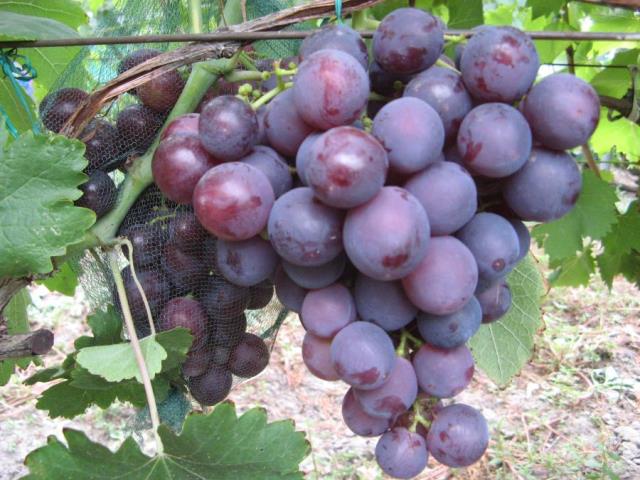Among the varieties of grapes, many varieties obtained as a result of the work of national breeders. Derived hybrids in taste and resistance to diseases are not inferior to the developments of scientists and specialists. One vivid example is the Rochefort variety. Let's look at its description.
Table of contents
Description of the grape variety Rochefort
The hybrid was bred by amateur breeder Pavlovsky EG, who received a new variety as a result of crossing Cardinal and Talisman pollinated with a mixture of pollen.The grapes are early ripening with a growing season of 105-110 days.
The shoots of the plant are vigorous, reach a height of 120-135 cm. The branches are densely leafy, the inflorescences are formed of two sexes, which provides good pollinability. Flowering begins in early June, and in July you can harvest the first harvest. On one bush 12-22 bunched.
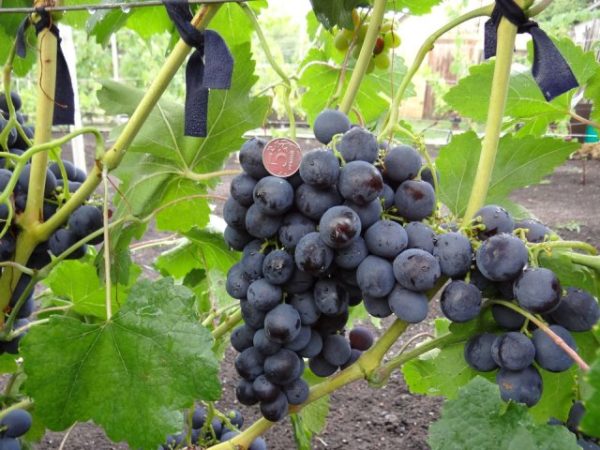
The variety is recommended for cultivation in the southern regions of the country. However, experienced gardeners are given a good harvest in the Moscow region and some central regions of Russia. And although the plant is frost-resistant, it is wrapped in its preparation for the winter.
Characteristics of berries
According to the characteristics of the berries and the whole bunch, it can be stated that the variety belongs to the elite. Large brushes of dark purple color reach a mass of 400-1000 grams. Oval-shaped berry curls up to 13 gr. with a diameter of 21 mm. The skin is of medium density, but thin, almost not felt when eating.In one berry there are only 3-4 large-sized seeds, which allows them to be detected without difficulty.
Productivity from a bush - 4-7 kg, with proper agricultural technology and a favorable climate, it is possible to remove up to 10 kg. And although it is impossible to call Rochefort a high-yielding one, the taste and commodity qualities of grapes outweigh the quantity indicator, on which the national breeder made a bet.

The advantages and disadvantages of the variety
Those gardeners who have had experience in growing Rochefort grapes distinguish the following primary qualities of the variety:
- early ripening of the crop;
- excellent rooting and fast establishment of cuttings;
- good pollination due to the presence of heterosexual flowers;
- frost resistance of the plant (can withstand frost down to -23 °);
- tolerance to diseases (mildew, oidium);
- high evaluation of product and taste characteristics;
- good transportability and long period of storage of the broken bunches.
In order to form a complete picture of the culture, it is worth noting the existing disadvantages:
- relatively low yield;
- the rapid formation of color is misleading about the ripeness of the berries;
- poor resistance to phylloxera.
Landing
Agrotechnika varieties do not provide for complex and frequent events. When planting and growing plants, it is enough to adhere to the following rules:
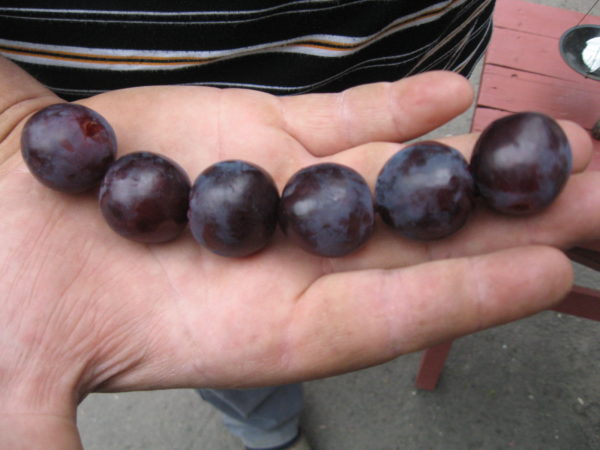
- the place for a sapling is chosen in a well-lit place without drafts (the southern or south-western side of the capital building is ideal);
- if it is planned to land at the building, it is recommended to observe an indent of at least 1 m from the foundation;
- in case of high groundwater occurrence, it will be necessary to arrange drainage;
- the landing time is planned for mid-September (plus or minus 2 weeks depending on the climatic characteristics of the region), it is possible to land in the spring (the temperature should not be below 10 °);
- between bushes observed interval of 2 m;
- well parameters - depth not less than 80 cm, width - 65-80 cm;
- at the bottom of the pit is the addition of a mixture of fertile land and humus (compost);
- the seedling is immersed in the hole to the root of the cervix, and then carefully filled with soil.
Immediately after planting the soil is better to mulch. In a humid environment, it will be much easier to take root.
Pay attention to the choice of seedlings. It should be a strong shoot with a root length of at least 15-25 cm with a stem thickness of 7-9 mm. Too long root system is pruned. This procedure stimulates the rapid development of the vine.
Care for a young and mature vine
A feature of the variety Rochefort is unpretentiousness to agricultural technology, but elementary care should still be carried out. Watering should be carried out as the soil dries.Irrigation stops during the formation of berries, as an excess of moisture can cause skin cracking. After harvesting, the bushes are watered before the plant is prepared for winter (2 weeks before the shoots wrap, watering stops).
To prevent the soil from drying out in arid summer, it is recommended that moistening and loosening be carried out more often. The treated area can be covered with a layer of mulch, it helps retain moisture in the soil. Sawdust or moss is used as mulch.
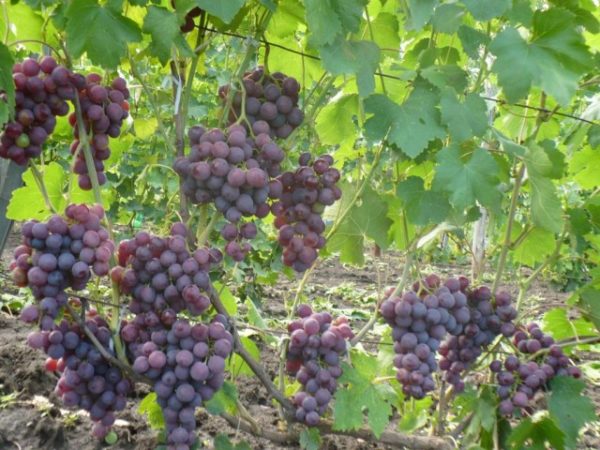
The soil is fertilized once a year with organic matter (humus, compost). During the growing season it is enough to use top dressing in the form of a solution of wood ash or herbal tinctures. It is also appropriate to water 1-2 times per season with tincture of bird droppings.
Particular attention requires the formation of a bush. When pruning, you should take into account the recommended number of eyes on the shoot, the figure should not exceed 30-35 eyes, otherwise the plant will be overloaded. On one vine leave 6-8 eyes.
As the vines develop, you will need to tie up growing shoots so that they do not lay down on the ground or other plants. When preparing grapes for winter, you should free the branches from under the support for wrapping with spruce branches, geotextiles or other natural insulation. Wrapped vine is added with soil. It is better to take the soil away from the bush, so as not to open the root zone, otherwise the root system will perish during severe frosts.
Breeding methods
Reproduction of Rochefort grapes is carried out with the help of saplings and cuttings grafted to the stock.
Rules for planting seedlings:
- 2 weeks before planting, dig a hole (depth 80-100 cm);
- pour a bucket of fertile soil into the recess first, then 2 buckets of humus / compost, then a bucket of soil again;
- let the bedding stand for 2 weeks, then bury the seedling;
- set in the hole support for escape;
- water;
- grumble the surface of the soil around the bush.
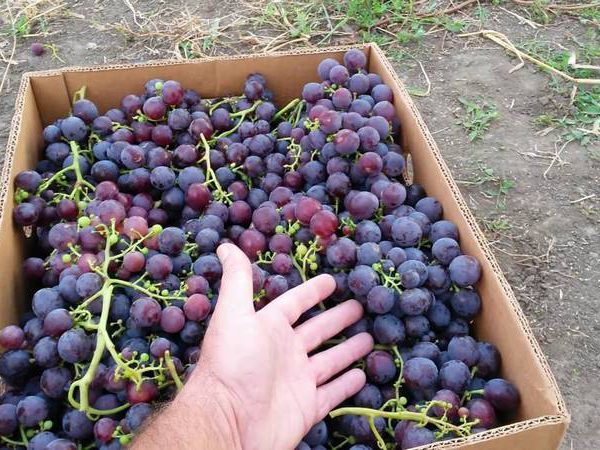
Rules for grafting cuttings to the stock:
- cut off an old bush so that a stump of about 10 cm is left above the ground;
- clean cut surface of dirt;
- in the center of the hemp to make a cross-shaped split, in which to place the prepared cutting;
- tightly pull the stock with a strip of fabric or string;
- cover up with wet clay.
Diseases and pests
The variety is distinguished by tolerance to mildew and oidium. Immunity to phylloxera is not developed, therefore it is recommended to periodically carry out prevention. If the pest is not neutralized, it can destroy the vine. Signs of insect attacks - backward development, yellowing of the leaf.
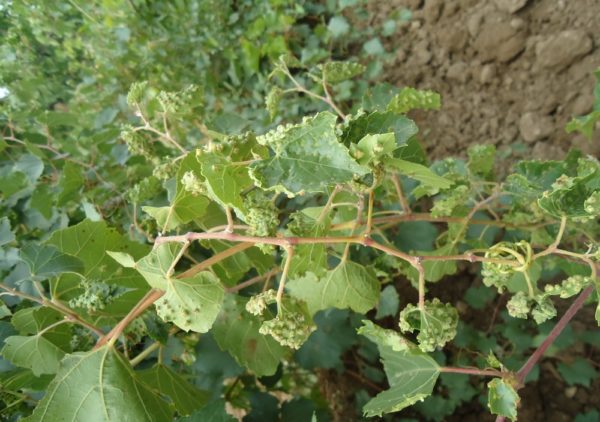
It is not always possible to cure the affected plant, therefore it is better to dispense with preventive treatments. When identifying parasites should use fumigators with prolonged action, as well as drugs: Astellik, Fustak, Fozalon.
Rochefort grape variety will appreciate the intensive development, early harvest and very tasty fruits. Beautiful purple clusters are also of aesthetic value, therefore gardeners often plant chubuks at gazebos or in a recreation area.
